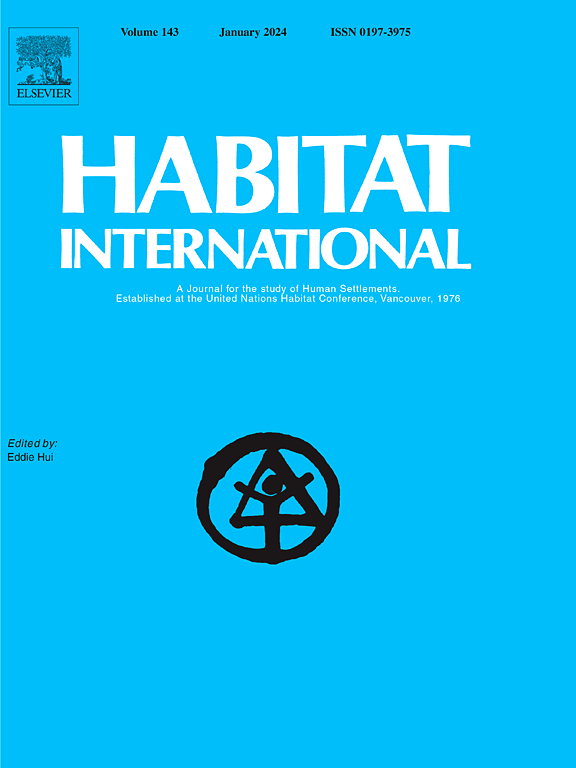Inferring ghost cities on the globe in newly developed urban areas based on urban vitality with multi-source data
IF 6.5
1区 经济学
Q1 DEVELOPMENT STUDIES
引用次数: 0
Abstract
Due to rapid urbanization over the past 20 years, many newly developed areas have lagged in socio-economic maturity, creating an imbalance with older cities and leading to the rise of “ghost cities”. However, the complexity of socio-economic factors has hindered global studies from measuring this phenomenon. To address this gap, a unified framework based on urban vitality theory and multi-source data is proposed to measure the Ghost City Index (GCI), which has been validated using various data sources. The study encompasses 8841 natural cities worldwide with areas exceeding 5 km2, categorizing each into new urban areas (developed after 2005) and old urban areas (developed before 2005). Urban vitality was gauged using the density of road networks, points of interests (POIs), and population density with 1 km resolution across morphological, functional, and social dimensions. By comparing urban vitality in new and old urban areas, we quantify the GCI globally using the theory of urban vitality for the first time. The results reveal that the vitality of new urban areas is 7.69% that of old ones. The top 5% (442) of cities were designated as ghost cities, a finding mirrored by news media and other research. This study sheds light on strategies for sustainable global urbanization, crucial for the United Nations' Sustainable Development Goals.
基于城市活力的多源数据全球新兴城市鬼城推断
由于过去20年的快速城市化,许多新开发地区的社会经济成熟度滞后,造成了与老城市的不平衡,导致“鬼城”的兴起。然而,社会经济因素的复杂性阻碍了全球研究衡量这一现象。为了解决这一差距,本文提出了一个基于城市活力理论和多源数据的统一框架来衡量鬼城指数(GCI),并利用各种数据源对其进行了验证。该研究涵盖了全球8841个面积超过5平方公里的自然城市,将每个城市分为新城区(2005年以后开发)和旧城区(2005年以前开发)。城市活力是通过道路网络密度、兴趣点(poi)和人口密度来衡量的,分辨率为1公里,涵盖形态、功能和社会维度。通过比较新旧城区的城市活力,我们首次运用城市活力理论在全球范围内量化了GCI。结果表明,新城区活力是旧城区活力的7.69%。排名前5%(442个)的城市被指定为鬼城,新闻媒体和其他研究也反映了这一发现。这项研究揭示了对联合国可持续发展目标至关重要的全球可持续城市化战略。
本文章由计算机程序翻译,如有差异,请以英文原文为准。
求助全文
约1分钟内获得全文
求助全文
来源期刊

Habitat International
Multiple-
CiteScore
10.50
自引率
10.30%
发文量
151
审稿时长
38 days
期刊介绍:
Habitat International is dedicated to the study of urban and rural human settlements: their planning, design, production and management. Its main focus is on urbanisation in its broadest sense in the developing world. However, increasingly the interrelationships and linkages between cities and towns in the developing and developed worlds are becoming apparent and solutions to the problems that result are urgently required. The economic, social, technological and political systems of the world are intertwined and changes in one region almost always affect other regions.
 求助内容:
求助内容: 应助结果提醒方式:
应助结果提醒方式:


